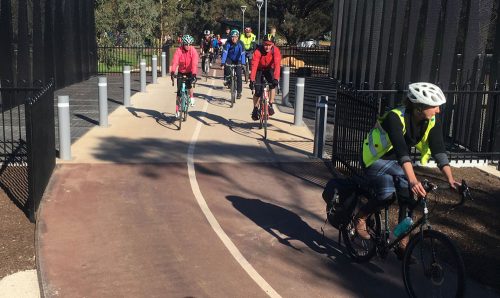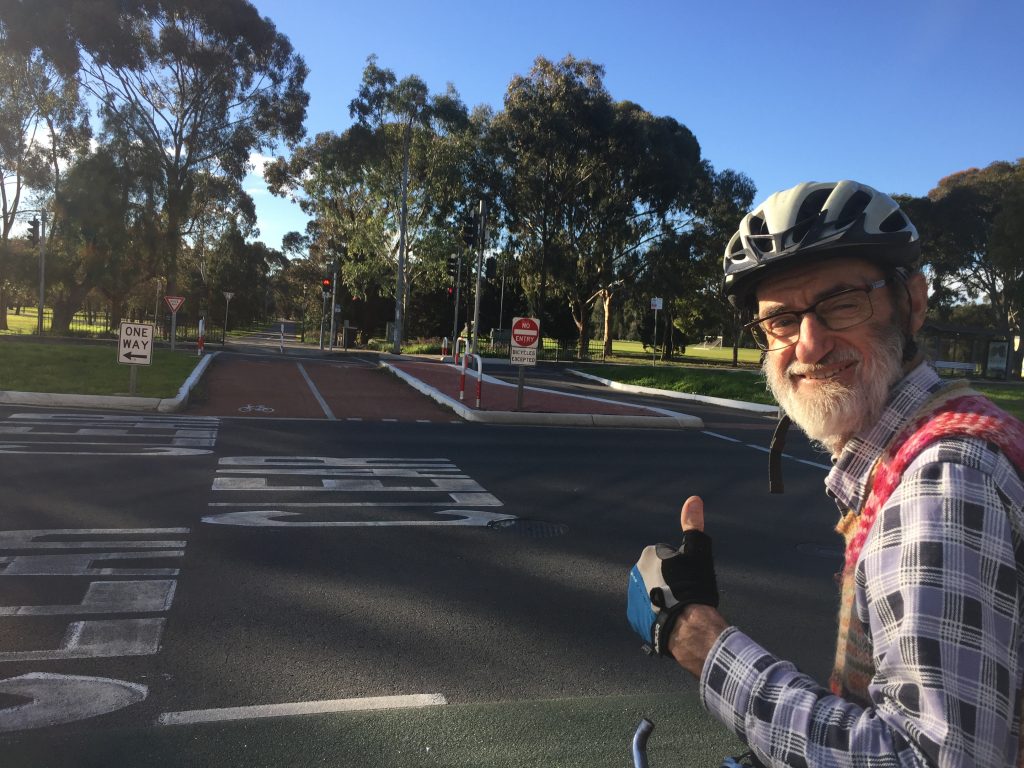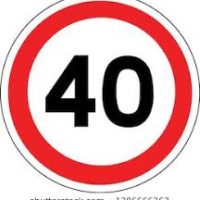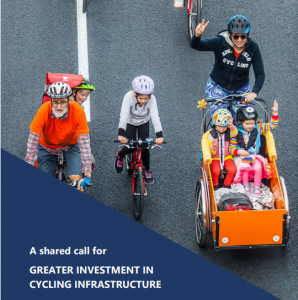We require advocacy when the evidence for change is not matched by policy commitment and where community demand is ahead of political action.
“To a politician, one letter is a complaint and five letters is public opinion” Professor Trevor Hilton
Our advocacy approach – what we do to support our members?
Bike Adelaide engages with local councils and state elected members particularly in transport, health, environment and treasury. We maintain relationships with Department of Transport and Infrastructure staff (DIT), leaders and Ministers and local council staff and respond to consultations for our members.
In the community we are building an army of local bike advocates in SA with Bicycle User Groups in local council areas. These on the ground riders know their area better than anyone (to see if there is a BUG in your local council area or for tips on how to start a BUG read on).
We aim to keep people informed and engaged about transport issues and share positive messages about cyclists in the media.
We believe it is important to collaborate with organisations with similar goals and philosophies (healthy, active, non-polluting communities).
Current campaigns
- Bike Adelaide calls for an investment of $80 million a year for 4 years directed to cycling infrastructure or 5% of transport investment expenditure (based on previous budgets) including the following projects: separated cycle routes through the City of Adelaide, a bridge connecting the River Torrens Linear Path trail to the RAH over the railway line, a bridge on the Mike Turtur Bikeway across the Goodwood Railway station, an expansion of the cities Greenway paths, and better arterial road crossings.
- Commit to $10 million investment for the State Bike Fund each year for 4 years.
- Fund our priority network improvements for inner and middle Adelaide and River Torrens Linear Path trail connections – DIT planning studies 102020-BISA identified projects
- Fund projects in outer metro areas including a Seaford to Aldinga Bikeway, Adelaide Wine trail (Connecting McLaren Vale to the Barossa), Gawler Greenway (Gawler to Elizabeth), shoulder sealing on regional roads used by cyclists in Mount Barker District, Barossa Valley, Adelaide Hills and Onkaparinga.
- Fund cycle tourism opportunities across South Australia
- Fund the Wine Capital Cycle Trail COUNCIL-MEDIA-Funding-sought-for-iconic-Wine-Capital-Cycle-Trail.pdf (ahc.sa.gov.au)
Educating Councillors and business on the benefits of active transport investment in the city
Support the SA Bike Economy: Businesses involved in South Australia’s Bicycle Economy are joining the call, as our organisations involved in health, conservation, and bicycle advocacy. Invest in a quality bike network and support industry sectors that help create active healthy communities.
Our full submission to government is available here – supporting greater investment in cycling infrastructure
What do we want to see done in South Australia to support cycling?
Strategy
Map out a direct, connected, safe and pleasant cycle network for anyone aged 8 – 80 years and present this in State Cycling Strategy. Currently there is no bicycle plan or transport plan.
In the absence of a State Strategy Bike Adelaide is slowly aiming to map the network.
Infrastructure
City Bikeways: Our team has put considerable advocacy efforts into the Frome St Bikeway, especially trying to get it finished. We have rallied bike riders to contact Councillors and talked with ACC staff about bikeway design options. Bike Adelaide also continues to liaise with the City of Adelaide on the City Bikeway as Adelaide needs a Bikeway Network.


Funding
State investment: Increase cycle funding from 0.6% of the transport budget to 5% of investment expenditure (approximately $80 million each year).
State Bicycle Fund: This fund supports local councils with 50/50 funding for infrastructure projects. Bike Adelaide advocates for it to be significantly increased as an effective way to build a bike network. 20/21 funding was increased to $750,000. Our call is for $10 million each year.
LGA’s: All local councils to provide yearly funding to implement the networks set out in their Bicycle Plans, supported by applications to the State Bike Fund. This can occur with a yearly budget allocation e.g. $1 million, or with yearly budget bids as part of the budget process.
Economics
Social cost benefit analysis: Bike Adelaide advocates for changes to the existing Cost Benefit Analysis tools used to assess transport infrastructure in SA which exclude health, environmental and liveability costs and prioritise travel time efficiency. Examples of this may be seen on our “Links & Resources” page and also this Dutch example:
Social costs and benefits of bicycle summary
Invest in cycling projects as an agile, effective economic stimulus: a US study found that 11.4 jobs are generated per $1 million invested in cycling facilities (compared to 7.8 for road projects).
What else is needed to create bike friendly communities?
40km local street speed limits: The cheapest and easiest way to increase safety on local streets. Children should feel safe to use the streets around their homes.
Wayfinding signage: Make it easy for people to find their way by bike using existing routes. RTLP Wayfinding Wayfinding
Bicycle parking and end of trip facilities: Enforce higher rates of bicycle parking in development plans and parking at destinations.
Better integrate public transport and cycling (last km access): Route upgrades and secure bike parking.
Bike carriage on buses and trains (free for travel in anti-peak direction)
Allow contraflow cycling on one-way streets
Enforce 1m passing laws using the ACT approach
Provide positive public messaging to support people who ride and encourage new people to cycle.
Helmets: Advocating for a trial of optional helmet use on bike trails and shared use trails. Bike Adelaide’s position on mandatory bicycle helmets.



